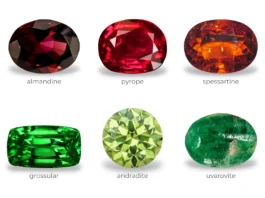Minerals play a pivotal role in sustaining modern industrial processes, powering technological advancements, and driving economic growth. From powering our smartphones to propelling the wheels of electric vehicles, these essential raw materials form the backbone of various industries. Their value lies not only in their abundance but also in their unique properties that make them indispensable for diverse applications. Here, we explore the 10 most valuable minerals for industrial use, each contributing significantly to sectors such as energy, electronics, manufacturing, and agriculture. The demand for these minerals continues to evolve with technological innovations, environmental concerns, and shifts in global economic dynamics. Understanding their importance provides insights into the intricate web of dependencies that characterize the modern industrial landscape.

Application: Lithium is a key component in rechargeable batteries, particularly those used in electronic devices like smartphones and laptops. Its significance has grown exponentially with the rise of electric vehicles (EVs).
Industrial Impact: The demand for lithium has surged due to the proliferation of EVs and renewable energy storage systems.

Application: Cobalt is essential in the production of lithium-ion batteries, providing stability and longevity to the battery.
Industrial Impact: As the automotive industry and electronics manufacturers increasingly turn to lithium-ion batteries, the demand for cobalt has risen, prompting efforts to ensure ethical and sustainable mining practices.

Application: Graphite serves as a crucial component in lithium-ion batteries, acting as an anode material. It is also used as a lubricant and in various industrial processes.
Industrial Impact: The expanding electric vehicle market and the need for energy storage systems have heightened the demand for graphite.

Application: REEs, including neodymium and dysprosium, are integral to the production of magnets used in electronics, wind turbines, and electric vehicle motors.
Industrial Impact: The electronics and renewable energy sectors heavily rely on REEs, making them critical for technological advancements.
Platinum Group Metals (PGMs):

Application: Platinum, palladium, and rhodium are used in catalytic converters to reduce harmful emissions in automobiles. They are also employed in the production of electronics and various chemical processes.
Industrial Impact: The automotive industry is a major consumer of PGMs, and their scarcity adds to their high value.

Application: Copper is a versatile metal used in electrical wiring, construction, and industrial machinery.
Industrial Impact: The demand for copper is closely tied to infrastructure development, electrical systems, and the manufacturing sector.

Application: Aluminum is widely used in the aerospace industry, automotive manufacturing, and construction due to its lightweight and corrosion-resistant properties.
Industrial Impact: The versatility of aluminum makes it a cornerstone in various industrial applications, contributing significantly to sectors like transportation and construction.

Application: Nickel is a key component in stainless steel production and is increasingly used in the cathodes of lithium-ion batteries.
Industrial Impact: The growing demand for stainless steel and electric vehicles has led to increased nickel consumption.
Phosphorus:

Application: Phosphorus is a critical element in fertilizer production, supporting global agriculture and food production.
Industrial Impact: The agricultural sector heavily relies on phosphorus for the production of fertilizers, making it an essential mineral for food security.

Application: Tungsten is known for its high melting point and is used in the production of industrial machinery, cutting tools, and electronics.
Industrial Impact: Its unique properties make tungsten crucial in various high-temperature and high-pressure industrial applications.
The exploration of the 10 most valuable minerals for industrial use reveals the intricate tapestry of dependencies that underpin modern technological and industrial landscapes. From powering our electronic devices to driving the green revolution through electric vehicles and renewable energy, these minerals are the unsung heroes of industrial progress. The dynamic interplay of market demand, technological innovation, and environmental considerations shapes the value and significance of each mineral.
As we move forward, the global demand for these minerals is poised to evolve further. The rise of electric vehicles, the push for sustainable energy solutions, and the continual quest for advanced materials will continue to influence the market dynamics of these essential resources. Striking a balance between meeting the growing demand for minerals and ensuring responsible, sustainable extraction practices remains a critical challenge for industries and policymakers alike.
Moreover, the geopolitical landscape is an important factor to consider. Given the concentration of certain minerals in specific regions, the secure and ethical sourcing of these materials becomes a strategic concern for nations and industries alike.
In conclusion, the 10 valuable minerals highlighted here are not merely commodities; they are the lifeblood of modern industry, driving innovation and shaping the future of technology. As we navigate the challenges of a rapidly changing world, the responsible and sustainable management of these mineral resources becomes paramount for ensuring a resilient and thriving global economy.






